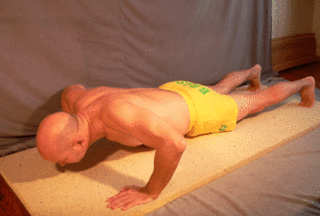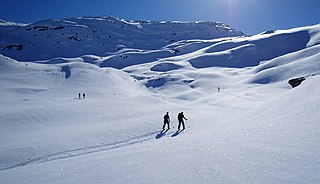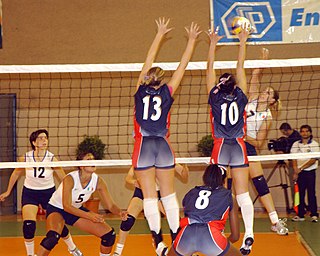Artistic gymnastics is a discipline of gymnastics in which athletes perform short routines on different apparatuses, with less time for vaulting. The sport is governed by the Fédération Internationale de Gymnastique (FIG), which designs the Code of Points and regulates all aspects of international elite competition. Within individual countries, gymnastics is regulated by national federations, such as Gymnastics Canada in Canada, British Gymnastics in the United Kingdom and USA Gymnastics in the United States. Artistic gymnastics is a popular spectator sport at the Summer Olympic Games and other competitions.

A spelling bee is a competition in which contestants are asked to spell a broad selection of words, usually with a varying degree of difficulty. The concept is thought to have originated in the United States, and spelling bee events, along with variants, are now also held in some other countries around the world. The first winner of an official spelling bee was Frank Neuhauser, who won the 1st National Spelling Bee in Washington, D.C. in 1925 at age eleven.
Soviet Student Olympiad was an annual set of contests for students in USSR. There were two separate multi-round competitions every year: for higher education (universities) and general education. Both competitions had several rounds, and winners from lower rounds would go to the next round. Not only individual members, but teams were awarded too. The main difference between two Olympiads was that the school one had separate threads for every grade, while the university one was for all students.

In Russia the state provides most education services, regulating education through the Ministry of Education and Science. Regional authorities regulate education within their jurisdictions within the prevailing framework of federal laws. Russia's expenditure on education has grown from 2.7% of the GDP in 2005 to 3.8% in 2013, but remains below the OECD average of 5.2%.

Education in the Soviet Union was organized in a highly centralized government-run system. Its advantages were total access for all citizens and post-education employment. The Soviet Union recognized that the foundation of their system depended upon an educated population and development in the broad fields of engineering, the natural sciences, the life sciences and social sciences, along with basic education.
Seventh grade, equivalent to Year 8 in England and Wales, and S1 in Scotland, is a year of education in many nations. The seventh grade is the seventh school year after kindergarten. Students are usually 12–13 years old.

Young Pioneer camp was the name for the vacation or summer camp of Young Pioneers. In the 20th century these camps existed in many socialist countries, particularly in the Soviet Union.
{Use British English|date=May 2013}}

Sports such as football and wrestling have been popular in Ukraine since the 19th century. Ukraine has benefited from the Soviet Union's emphasis on physical education, and Ukraine was left with hundreds of stadiums, swimming pools, gymnasiums, and other athletic facilities after the collapse of the Soviet Union. Ukraine sports or athletic movement was influenced greatly by Sokol gymnast organization that was popular in the Central Europe since the second half of the 19th century.
Starting in September 2018, 12-year secondary education will replace 11-year which was mandatory before that. As a rule, schooling begins at the age of 6, unless your birthday is on or after September 1. In 2016/17 the number of students in primary and secondary school reached 3,846,000, in vocational school 285,800, and in higher education 1,586,700 students.
Sabah Tshung Tsin Secondary School is a Chinese independent high school located in Kota Kinabalu, Sabah, Malaysia. The principal is Mr. Teng. The school has two semesters each year. An academic year begins in January, with an approximately two weeks holiday in June, and ends in the beginning of November. The school is one of sixty-one Chinese Independent High Schools in Malaysia. In 2007, the school was chosen as one of the ten Chinese Independent High Schools in Malaysia to be included as a Cluster School under the Education Blueprint of the Malaysian Government's Ninth Malaysia Plan.
Following independence from the Soviet Union, a major economic depression cut "public financing" for education in Kazakhstan, "which dropped from 6% of gross domestic product in 1991 to about 3% in 1994, before rising to 4% in 1999." Elementary- and secondary-school teachers remain badly underpaid; in 1993 more than 30,000 teachers left education, many of them to seek more lucrative employment.
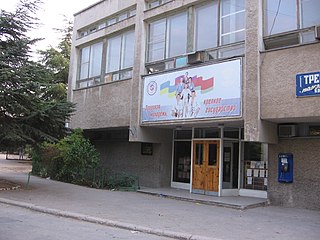
A sports school is a type of educational institution for children that originated in the Soviet Union. Sports schools were the basis of the powerful system of physical culture (fitness) and sports education in the USSR and the Eastern Bloc, particularly East Germany. The main features of this system remain in the system of sports education in Russia and other post-Soviet states, and also became the basis of similar systems in other countries, one of the most powerful ones at the present time being that of the People's Republic of China. Many legendary athletes, such as Nikolai Andrianov, Nellie Kim, Alexander Popov, Viktor Krovopuskov, Vladislav Tretiak, Valeri Kharlamov, Anatoly Alyabyev and Sergey Bubka started their path to Olympic success from Soviet sports schools.
Mongolia's education system has undergone major changes in the 20th century. The education reforms during communist times were a stark break with traditional education that was often religious and esoteric. These reforms were modeled on Soviet education systems and greatly expanded access to education for Mongolian citizens. Among the changes was a transition from the traditional Mongolian script, from 1941 to 1946, to the Cyrillic alphabet. Literacy was greatly expanded as most of the population enjoyed free primary school. However, the move to democracy and free markets in the 1990s has had some negative impacts on education in Mongolia, though these setbacks have been ameliorated some by an improving economy and policy reforms. Many adults benefit from the non-formal distance education programs sponsored by the government in conjunction with foreign NGOs. Today education in Mongolia is overseen by the Ministry of Education, Culture, and Science.

Football is the number one sport in Ukraine as in most of Europe. Association football in Ukraine is governed by the Football Federation of Ukraine, which was organized in 1991 to replace the Soviet Football Federation of Ukrainian SSR created earlier in the 1920s as part of the Soviet system of physical culture councils. Football Federation of Ukraine is a non-governmental organization and is a member of the National Olympic Committee of Ukraine.
The Championship of the Ukrainian SSR in football was a top competition of association football in the Ukrainian SSR in 1921-91. Number of Ukrainian clubs almost never competed in the championship such as Dynamo Kyiv.
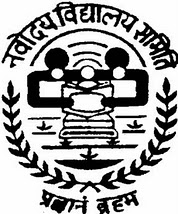
Jawahar Navodaya Vidyalaya, Malhar, popularly known as Jawahar Navodaya Vidyalaya, Bilaspur, is a part of Navodaya Vidyalaya Samiti. It is one of the approximately 593 Jawahar Navodaya Vidyalayas in India, located in Malhar Village, near Masturi, Bilaspur, Chhattisgarh, India. It is about 32 kilometers from the Bilaspur city.
The 1962 Football Championship of Ukrainian SSR was the 32nd season of association football competition of the Ukrainian SSR, which was part of the Ukrainian Class B. It was the thirteenth in the Soviet Class B.




